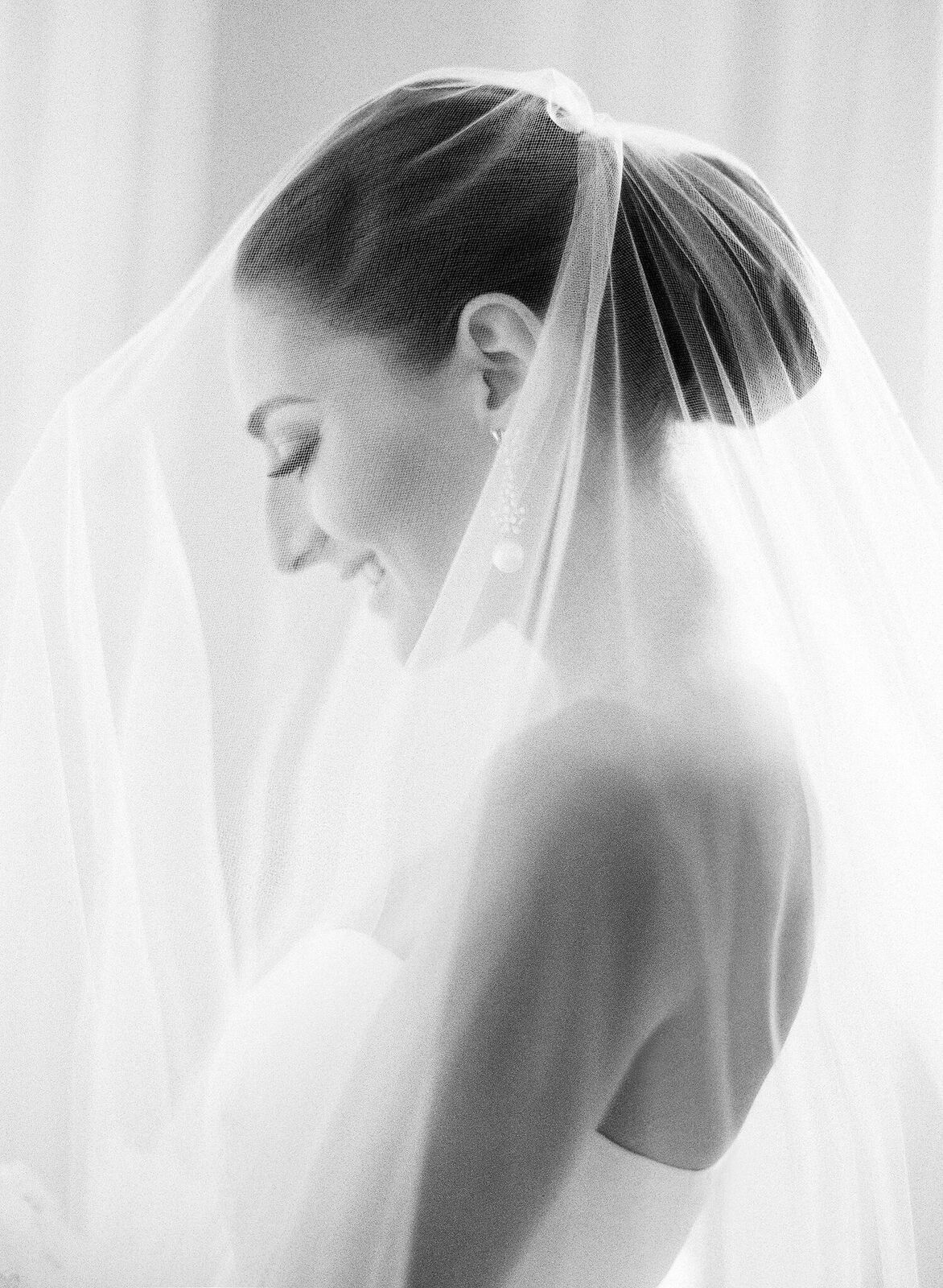
Veil or no veil? It’s one of the big styling questions all brides face. But even if the answer is “yes”, that isn’t the end of the decision making. Long or short? Blusher or birdcage? With so many lengths and styles of veil, it can all get a bit overwhelming. But it’s worth investing a little time uncovering the options since different veils can really transform your whole look. Here’s my guide to how to choose a wedding veil you love.
First things first! Let’s take a look at the main types of veils available and their lengths. Knowing the right terms will help you choose a wedding veil.
- Birdcage veil: 4”–9” (from eye-level to jawline)
- Shoulder-length veil: 20–22” (shoulder level to the middle of the back)
- Elbow veil: 32” (elbow level)
- Fingertip veil: 38–45” (below hips)
- Knee-length veil: 48” (knee level)
- Waltz (or ballet) veil: 60” (mid-calf)
- Floor-length veil: 72” (just grazes floor)
- Chapel (or sweep) veil: 90” (floor-length with a little drape but no train)
- Cathedral veil: 108–120” (extends beyond bridal train)
Within those lengths you have other options to consider. For example, a blusher (a single layer of tulle which falls over the face and is then pulled back to reveal the bride), mantilla (circular lace-edged veil), or Juliet cap.
So how do you make a decision?
Start with your wedding dress. It’s essential that you take your wedding dress into account when you choose a wedding veil. The right veil will elevate your dress, while the wrong one might clash with the detailing or obscure an important feature. So be sure to choose your dress first! A mermaid or trumpet silhouette looks gorgeous with one of the mid-length veils, while a simple fitted sheath pairs well with a floor-length veil. The best way to find the perfect veil is to try several on with your dress and look at them from all angles. Ask your stylist for guidance! The salon staff will be a great help here.
Take your wedding style into account. Your overall bridal and wedding style are also important elements to take into account. So for example, if you’re dreaming of a glamorous vintage vibe, a birdcage veil will be a great choice. To create a more bohemian feel, a chapel veil or Juliet cap (a la Kate Moss) works well. For a very formal wedding, especially one with a grand church setting, you can’t go wrong with a chapel veil!
Think about your height. Some veils look better on brides with different heights. For example, a fingertip veil looks best on a tall bride. A shoulder-length veil is a better option for short brides. Other styles, like cathedral veils, look good on any height of bride.
Consider your hairstyle. Not all bridal hairstyles work with all veils. Hairstyle can also affect placement, completely changing the look of a veil. The longer or heavier the veil, the more support it will need, making a formal updo a good choice. If you’re set on a particular look, discuss the options with your hair stylist, who will also be able to advise on your hair type and texture.
Don’t forget to include the veil in your budget! Many brides focus all their attention (and budget) initially on the dress itself and don’t take accessories into account. But veils can be costly, especially if they include intricate lace or embellishments. Take your overall bridal budget into account when you choose a wedding veil to avoid unplanned costs. And it doesn’t have to come from the same place you purchased your gown!
And there you have it! Everything you need to know to choose a wedding veil!
xoxo,
Mindy



